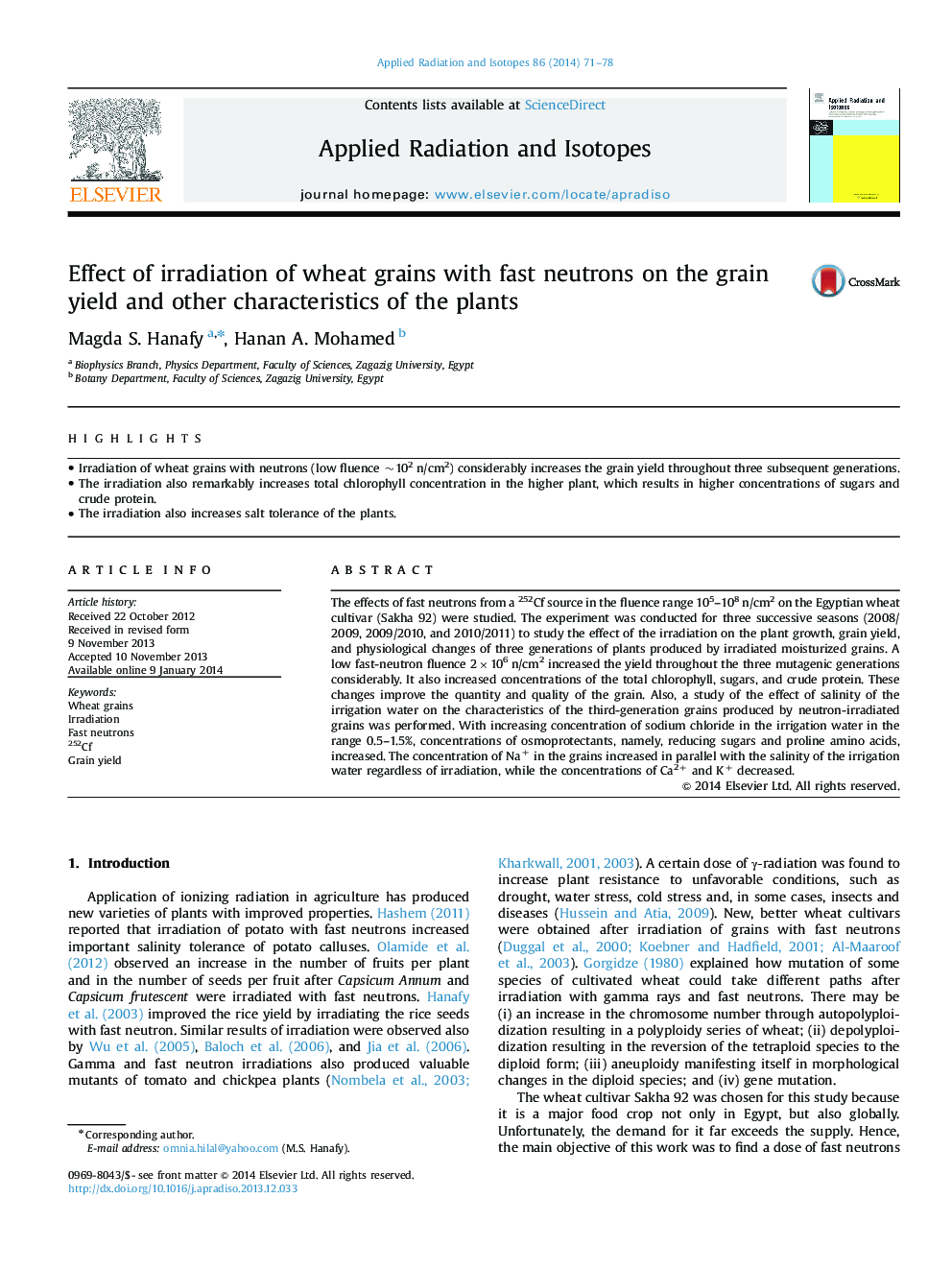| Article ID | Journal | Published Year | Pages | File Type |
|---|---|---|---|---|
| 1875955 | Applied Radiation and Isotopes | 2014 | 8 Pages |
•Irradiation of wheat grains with neutrons (low fluence ~102 n/cm2) considerably increases the grain yield throughout three subsequent generations.•The irradiation also remarkably increases total chlorophyll concentration in the higher plant, which results in higher concentrations of sugars and crude protein.•The irradiation also increases salt tolerance of the plants.
The effects of fast neutrons from a 252Cf source in the fluence range 105–108 n/cm2 on the Egyptian wheat cultivar (Sakha 92) were studied. The experiment was conducted for three successive seasons (2008/2009, 2009/2010, and 2010/2011) to study the effect of the irradiation on the plant growth, grain yield, and physiological changes of three generations of plants produced by irradiated moisturized grains. A low fast-neutron fluence 2×106 n/cm2 increased the yield throughout the three mutagenic generations considerably. It also increased concentrations of the total chlorophyll, sugars, and crude protein. These changes improve the quantity and quality of the grain. Also, a study of the effect of salinity of the irrigation water on the characteristics of the third-generation grains produced by neutron-irradiated grains was performed. With increasing concentration of sodium chloride in the irrigation water in the range 0.5–1.5%, concentrations of osmoprotectants, namely, reducing sugars and proline amino acids, increased. The concentration of Na+ in the grains increased in parallel with the salinity of the irrigation water regardless of irradiation, while the concentrations of Ca2+ and K+ decreased.
